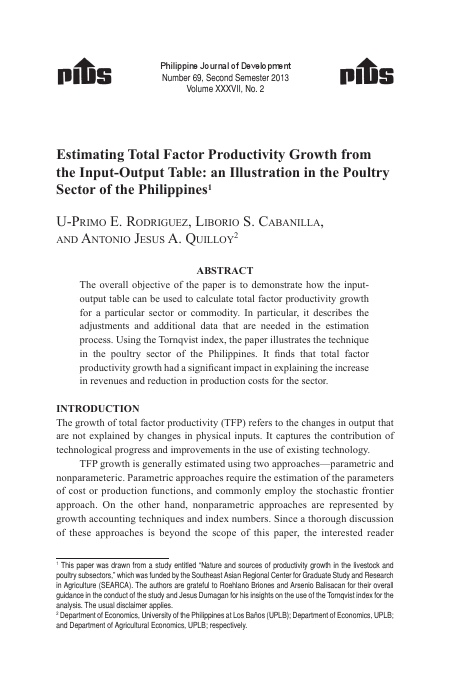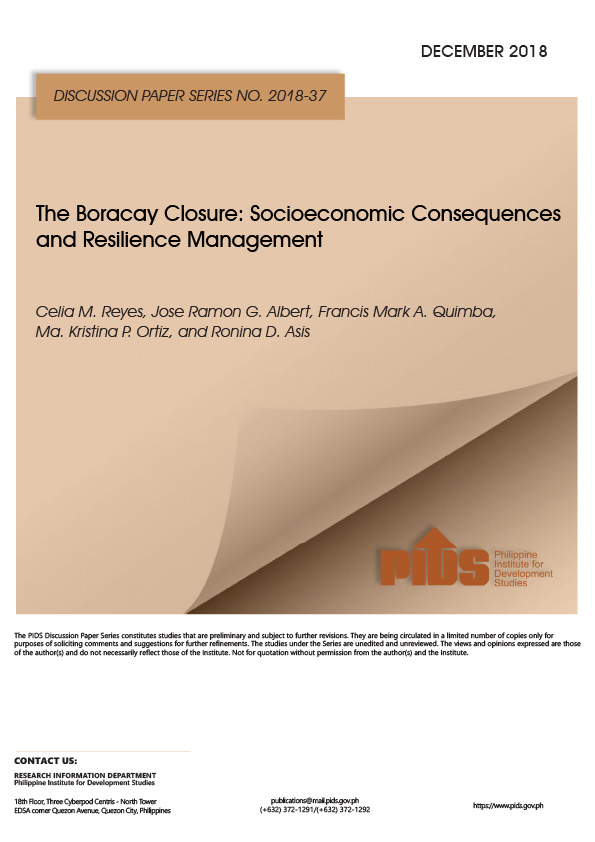AGRICULTURAL officials cited the poor conditions for crops in the El Niño-hit second quarter, signaling another contraction when the agricultural output report is released today.
Analysts said another negative quarter may be sufficient to push output into the red over the full year, though they added that any gains in the latter part of the year will depend on the severity the wet season with La Niña setting in.
Department of Agriculture (DA) Secretary Emmanuel F. Piñol told BusinessWorld he expects a recovery by year’s end with a projected surplus harvest for rice and corn.
“I would assume second quarter gross domestic product for agriculture is really low,” Mr. Piñol told BusinessWorld in a phone interview over the weekend. “That’s coming off negative 4% in the first quarter.
He added that delayed planting due to the lack of irrigation as a result of the drought will play a part in weighing down the output for the period, with Mindanao and parts of the Cagayan Valley among the worst affected.
He would not give a range of estimates for second-quarter output.
After being struck by El Niño, which peaked early this year, the value of farm output in the three months to March slid 4.53% year on year to P193.123 billion. This was a reversal from the 1.77% growth registered a year earlier.
Agricultural production in the second quarter of 2015 contracted 5.21% to P372.4 billion.
Roehlano M. Briones, senior research fellow at the Philippine Institute for Development Studies likewise projected that second quarter results would be a follow-on from the first quarter’s drop.
“For second quarter, [it will] continue depressing trends from first quarter. Main driver is hot dry weather,” said Mr. Briones in a mobile message.
Other economists concurred in projecting a contraction.
“It’s still going to be negative; most likely it could equal the first quarter,” Alvin P. Ang, economist at the Ateneo de Manila University, said in a phone interview.
For his part, Rolando T. Dy, executive director of the Center for Food and AgriBusiness of the University of Asia & the Pacific, reiterated his earlier projection of the second quarter experiencing “negative growth rate in the order of first quarter,” adding in a text message that low palay production will drive a negative first half.
For the first quarter this year, the crops subsector accounted for more than half of agricultural production. It slumped 8.55% year on year.
Palay (unhusked rice) and corn, which make up under a third of total crop output, contracted last year by 3.78% and 6.04%, respectively
Mr. Piñol earlier told reporters that palay output will be significantly depressed for the whole of the first half.
During the three months to March, palay volume contracted to 3.9 million metric tons (MT), 9.97% lower than the government’s forecast of 4.01 million. The figure is also considerably lower than 4.37 million MT output level during the January to March period last year.
Palay production in the half is estimated to total 8.12 million MT, 2.4% lower than level booked in the comparable period last year and 0.98% below the first estimates released in January by the Philippine Statistics Authority-Bureau of Agricultural Statistics.
Engineer Ariel T. Cayanan, the DA’s assistant secretary for Field Operations, declined to give initial estimates for palay output but replied in the positive when asked if output will fall a quarter-on-quarter basis.
Mr. Cayanan, however, assured that the slump would not reach double-digits.
Both Mr. Dy and Mr. Ang pointed out that with the decline deriving largely from the effects of a dry spell, the livestock and poultry sectors will not be showing the negative effects of El Niño.
The previous government pursued initiatives to boost livestock and poultry to balance out any decline in the crops subsector, a move supported by economists.
“Livestock and poultry, maybe those will be positive, but the problem is crops are not just palay and corn. It’s really across the board,” added Mr. Ang.
For full year projections, Mr. Ang hopes for “better results.”
“Maybe by the third quarter, flat and then we’ll have a pickup in the fourth quarter. But we’ll end up in the negative. A negative 4% (quarter) is a big thing,” said Mr. Ang, referring to the first quarter performance.
“Hopefully better results, but we don’t know what happens with the La Niña,” added Mr. Ang.
Typhoons during the later part of 2015 created spillover effects in early 2016.
However, Mr. Briones said that the rainy season may end up buoying crops. “Whole-year performance [will] depend on this recovery,” Mr. Briones said.
Mr. Dy said the best possible result for agriculture output in 2016 is zero growth but he said as things stand the year is “trending negative.”
Mr. Piñol was more bullish in his full-year projections, noting that his field visits suggest a strong rice and corn crop that will become apparent only late in the year.
“The projection right now, based on my visits, is that there will be surplus production in rice and corn but since planting was delayed, we will see the gains towards the end of the year,” Mr. Piñol said.
In 2015, farm output rose 0.11% to P788.698 billion on the back of the El Niño dry spell and Typhoon Lando, which hit in the fourth quarter.
Analysts said another negative quarter may be sufficient to push output into the red over the full year, though they added that any gains in the latter part of the year will depend on the severity the wet season with La Niña setting in.
Department of Agriculture (DA) Secretary Emmanuel F. Piñol told BusinessWorld he expects a recovery by year’s end with a projected surplus harvest for rice and corn.
“I would assume second quarter gross domestic product for agriculture is really low,” Mr. Piñol told BusinessWorld in a phone interview over the weekend. “That’s coming off negative 4% in the first quarter.
He added that delayed planting due to the lack of irrigation as a result of the drought will play a part in weighing down the output for the period, with Mindanao and parts of the Cagayan Valley among the worst affected.
He would not give a range of estimates for second-quarter output.
After being struck by El Niño, which peaked early this year, the value of farm output in the three months to March slid 4.53% year on year to P193.123 billion. This was a reversal from the 1.77% growth registered a year earlier.
Agricultural production in the second quarter of 2015 contracted 5.21% to P372.4 billion.
Roehlano M. Briones, senior research fellow at the Philippine Institute for Development Studies likewise projected that second quarter results would be a follow-on from the first quarter’s drop.
“For second quarter, [it will] continue depressing trends from first quarter. Main driver is hot dry weather,” said Mr. Briones in a mobile message.
Other economists concurred in projecting a contraction.
“It’s still going to be negative; most likely it could equal the first quarter,” Alvin P. Ang, economist at the Ateneo de Manila University, said in a phone interview.
For his part, Rolando T. Dy, executive director of the Center for Food and AgriBusiness of the University of Asia & the Pacific, reiterated his earlier projection of the second quarter experiencing “negative growth rate in the order of first quarter,” adding in a text message that low palay production will drive a negative first half.
For the first quarter this year, the crops subsector accounted for more than half of agricultural production. It slumped 8.55% year on year.
Palay (unhusked rice) and corn, which make up under a third of total crop output, contracted last year by 3.78% and 6.04%, respectively
Mr. Piñol earlier told reporters that palay output will be significantly depressed for the whole of the first half.
During the three months to March, palay volume contracted to 3.9 million metric tons (MT), 9.97% lower than the government’s forecast of 4.01 million. The figure is also considerably lower than 4.37 million MT output level during the January to March period last year.
Palay production in the half is estimated to total 8.12 million MT, 2.4% lower than level booked in the comparable period last year and 0.98% below the first estimates released in January by the Philippine Statistics Authority-Bureau of Agricultural Statistics.
Engineer Ariel T. Cayanan, the DA’s assistant secretary for Field Operations, declined to give initial estimates for palay output but replied in the positive when asked if output will fall a quarter-on-quarter basis.
Mr. Cayanan, however, assured that the slump would not reach double-digits.
Both Mr. Dy and Mr. Ang pointed out that with the decline deriving largely from the effects of a dry spell, the livestock and poultry sectors will not be showing the negative effects of El Niño.
The previous government pursued initiatives to boost livestock and poultry to balance out any decline in the crops subsector, a move supported by economists.
“Livestock and poultry, maybe those will be positive, but the problem is crops are not just palay and corn. It’s really across the board,” added Mr. Ang.
For full year projections, Mr. Ang hopes for “better results.”
“Maybe by the third quarter, flat and then we’ll have a pickup in the fourth quarter. But we’ll end up in the negative. A negative 4% (quarter) is a big thing,” said Mr. Ang, referring to the first quarter performance.
“Hopefully better results, but we don’t know what happens with the La Niña,” added Mr. Ang.
Typhoons during the later part of 2015 created spillover effects in early 2016.
However, Mr. Briones said that the rainy season may end up buoying crops. “Whole-year performance [will] depend on this recovery,” Mr. Briones said.
Mr. Dy said the best possible result for agriculture output in 2016 is zero growth but he said as things stand the year is “trending negative.”
Mr. Piñol was more bullish in his full-year projections, noting that his field visits suggest a strong rice and corn crop that will become apparent only late in the year.
“The projection right now, based on my visits, is that there will be surplus production in rice and corn but since planting was delayed, we will see the gains towards the end of the year,” Mr. Piñol said.
In 2015, farm output rose 0.11% to P788.698 billion on the back of the El Niño dry spell and Typhoon Lando, which hit in the fourth quarter.





